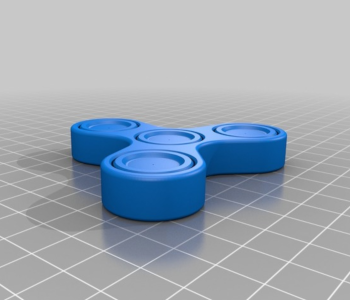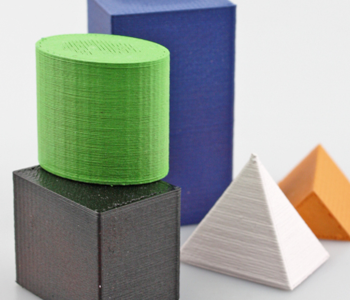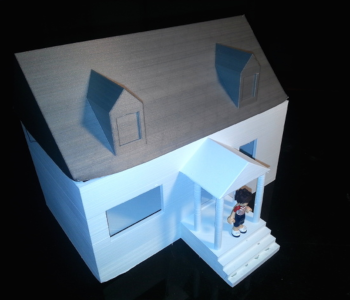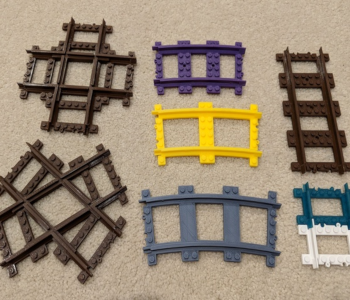Are 3D-Printed Toys Safe for Kids?
We have seen all manners of fun and cute stuff made from 3D printing. There is a lot that can be done with these creative projects, but they naturally tend to be attractive to young children. This begs the question – are 3D-printed toys safe for kids?
When designing toys for kids, it is always good to anticipate that they will put the toys in their mouths at some point. Thus, you will need to be mindful of choking hazards and possible toxic compounds in the 3D printing material. Is it possible to design child-safe 3D-printed toys? What are the precautions you should take?
The possible hazards of 3D-printed toys

There is always an element of danger when we hand any object to very young children. This has been well-considered by designers or manufacturers of commercially available toys. If you want to make your own toys using a 3D printer, then you will also need to adopt this same mentality.
Here are some of the hazards that you should consider when 3D printing a toy:
Choking hazards
Young children tend to put everything they can put their hands on in their mouths. Thus, parents are keenly aware not to let their children touch very small objects that can possibly be ingested.
This is certainly something worth considering if you’re 3D printing toys for your kids. It is best to design toys with large flat surfaces and no small appendages that can break apart and be swallowed.
Physical injury
When plastic toys break, they tend to have sharp edges that can cause injury to the skin or other body parts. This is more likely to happen to 3D-printed toys compared to other commercially made plastic toys made via injection molding. Thus, there needs to be some thought in designing toys that will not easily break.
Toxic materials
As already mentioned, kids will almost always put toys inside their mouths. This is concerning if you’re not sure if the toy was made using toxic materials. You have better control over this matter if you’re 3D printing the toys yourself – just make sure that you’re using filament that is food-safe or at least free of any toxic compounds.
Precautions for 3D printing toys

Knowing now the possible hazards of 3D-printed toys, it’s easier to come up with measures to make them safe for kids. It will take a bit of extra work, and not very fancy design may work, but these are worthy compromises for safety.
Stick to designs with large pieces and flat surfaces
The golden rule for picking toys for young kids is that they should be too big to be swallowed. This goes for all the individual parts of any toy. You will also want to choose designs that have large flat surfaces that are less likely to break.
Reinforce the prints
Aside from aesthetics, you will want to pay special attention to the mechanical integrity of a 3D-printed toy. Toys for children tend to go through intense levels of abuse. To reduce the chances of them breaking, you will want to design these toys with extra strength.
This may mean increasing infill density or the number of shells for the print. The orientation of the model on the print bed also plays an essential role. Printing at a higher speed may be beneficial in this case, as it promotes better layer adhesion.
Print with PLA
There is a wide range of plastics that are currently used for children’s toys. The classic LEGO bricks are made of ABS, but a vast majority are made of Polyethylene (PE) and Polypropylene (PP). Unfortunately, PE and PP are not thermoplastics and are not used in 3D printing.
If you’re worried about toxic compounds getting into your kid’s toys, then your best bet would be to 3D print with PLA. You can even get PLA filament that is classified as food-grade. PLA is manufactured from plant material and is devoid of the usual compounds you would find in oil-derived plastics.
Sand them smooth
Bacteria buildup is a major concern in 3D-printed toys because they typically have uneven surfaces. These small holes or ridges can cause a buildup of dirt or organic matter that can promote bacterial growth. An uneven surface also makes 3D-printed toys difficult to clean.
The best solution to this is to sand the layer lines smooth during post-processing. This will take a bit of work and you will need a set of sandpaper with different grit numbers. Polishing is not likely to be an option since there are not many food-grade polishing compounds available.
A few nice models for 3D-printed toys
If you’re looking for good ideas for toys that you can 3D print, here are some projects to get you started:
Toy blocks

What could be more classic than toy blocks? This simple model for basic 3D shapes makes great toys for very young children. It is also very easy to make these blocks robust with some good settings for infill and wall thickness. The flat surfaces are also very easy to sand smooth.
Dump truck

Again, another reliable toy for young kids is this classic dump truck. It is made of several pieces that have to be assembled post-printing. All the parts are large enough to not pose any choking hazards. Again, the large surfaces are very easy to sand smooth and implement robust print settings.
Doll house

This simple doll house would make a great complement to miniatures or figures that your kid may already have. It is a fairly simple 3D printing project made with only two separate pieces. Large flat surfaces make post-processing easy. The doll house can be easily scaled up to accommodate larger figures – the base size was designed for LEGO figures.
Train tracks

Does your kid have a toy train? A great way to expand the play area of a toy train is to 3D print your own train tracks. This particular model was designed based on the dimensions of LEGO train tracks, but it is possible to make train tracks of any shape or size. With 3D-printed tracks, you can customize the look and shape of your kid’s train tracks, opening the doors to endless combinations.
Final thoughts
3D printing is an incredible tool for making fun and quirky toys, but keep in mind that there are things to consider when making things for kids. You will want to be a bit more discriminating when it comes to the models you will be printing, as well as the filament that you will be printing with. Refining models to be more kid-safe takes a bit more work, but these safety measures are worth doing.





